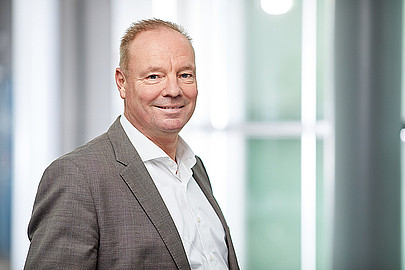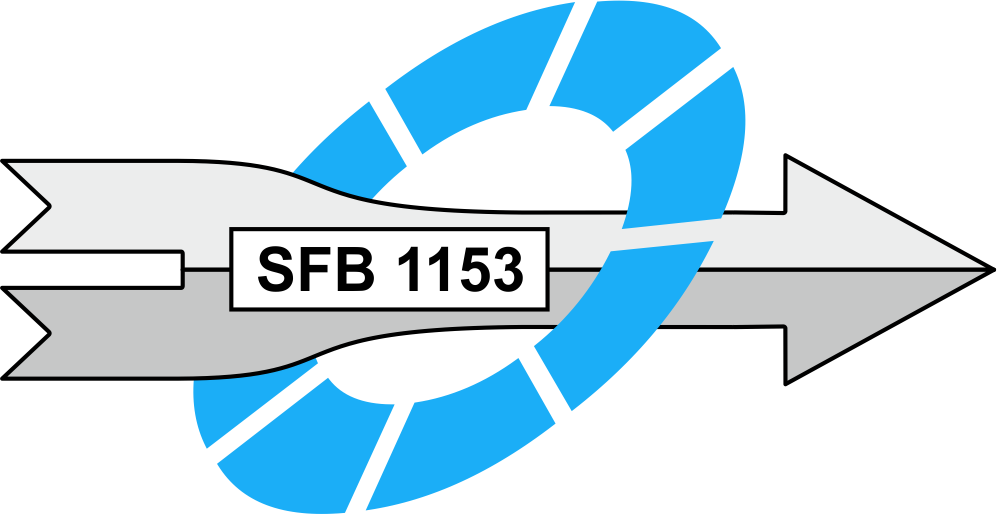Motivation and objectives
Multi-material design is a promising approach for all parts requiring different properties in particular part regions. Combinations of several materials allow saving the total part weight as well as the expensive material. The key challenge is the processing of hybrid workpieces with strong different thermos-physical properties (e.g. flow stress and thermal expansion). In order to achieve high formability of hybrid workpieces, both materials should be heated up to their specific forging temperatures at the same time. For this reason, tailored heating strategies with inhomogeneous temperature distribution are developed. The required temperature gradients are adjusted by targeted exploitation of the skin effect during induction heating. Another challenge is the development of the forming processes setting the position of the joining zone and its properties. In this respect, material flow control and influence of thermomechanical treatment on the microstructure of the joining zone have to be taken into account.
Results
During the first funding period, the die forging of coaxially joined semi-finished products has been successfully implemented using the examples of a bevel gear made of different steel types (C22.8 and 41Cr4 or X45CrSi9-3) and a bearing bushing (20MnCr5 and EN AW-6082). The workpieces for bevel gear were produced in subproject A4 by deposition welding, where the wear-resistant coating with steel 41Cr4 or X45CrSi9-3 was applied over the full area of future tooth flanks. It could be shown that a homogeneous material transition characterised by fine grain microstructure occurs as a result of subsequent hot forming. Figures 1 and 2 present respectively the forged bevel gear and the material distribution in the joining zone. In the case of the bearing bushing, concentrically arranged steel-aluminum workpieces were produced by extrusion. Here, it could be proven that too low temperature gradients as well as insufficient forming temperatures cause failure during forging. With increasing forming temperature, an insular growth of intermetallic phases along the joining zone was observed. Parallel to the development of the workpieces manufacturing in subproject A1, the required forming and heating concepts were developed and implemented. For the pre-testing, the systems without the extruded workpieces, the shrink fitted workpieces, were used in order to approximate the real connection in the hybrid workpieces. Even the areas with high deformation could be produced defect-free in this way.
Current work and outlook
The aims of the second funding period are the increase of the complexity of hybrid parts by the forming processing and to improve the properties of several dissimilar or graded joining zones. Moreover, the portfolio of material combinations will be extended to titanium alloys (demonstrator bearing bushing) and a new asymmetric geometry (demonstrator wishbone) will be studied. Further, the partially coated workpieces will be investigated on the demonstrator bevel gear, where the wear-resisting deposition will be locally applied in the tooth area. A further enhancement of complexity is expected by the filling of deposition-welded workpieces with an aluminum core. In the case of the bearing bushing made of titanium-aluminum workpieses, the requirements on the temperature gradients during induction heating increase. For this reason, the concepts with the simultaneous cooling of workpiece areas will be applied (e.g. local spray cooling or internally cooled gripper jaw (subproject C7)). In addition, a steel-aluminium long part with asymmetric workpiece geometry, inspired by the wishbone from automotive engineering, will be produced by combination of extrusion and die forging. The asymmetric geometry is challenging for the heating and material flow control, which should be predicted by numerical modelling in subproject C1, in order to target the forming tools design.
Publications
Subproject leader


30823 Garbsen


30823 Garbsen
Staff


30823 Garbsen


30823 Garbsen




30823 Garbsen


